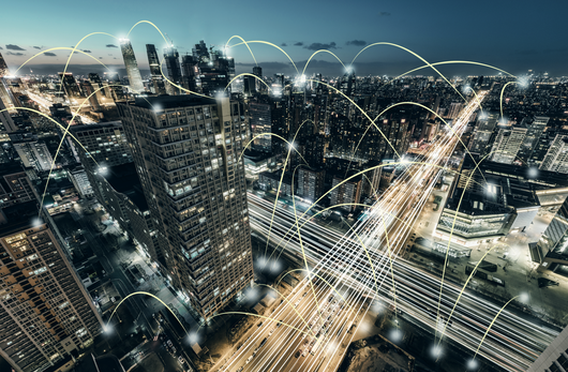How lighting controls can transform the city at night
Easy ways to save energy, prevent light pollution, and make your city more liveable
Because of the need to save energy and minimise light pollution, outdoor light should only be used when really needed, and darkness should be the default. Today’s smart controls make this easy – and offer much more besides. Users can fine-tune light levels for different times and activities, reduce maintenance cycles and extend the life of luminaires by dimming or turning them off when not needed, create dynamic light displays that turn structures into living works of art and access their lighting remotely from anywhere. Control options range from simple local setups right up to sophisticated smart lighting systems.
Individual control
Simple controls with time switches, photocells and motion detection offer reliable savings with little effort. Thorn’s bi-power switch (BPS) solutions give the option of dimming to 50% for eight hours at night. Bi-power does not require external control wiring and its settings can be easily customised or deactivated. Optional photocells can save as much as 50% by reacting to available daylight, while motion sensors offer the possibility of even bigger savings.
“The ability to conduct preventive maintenance means more reliable service, as well as big savings of time and money”
Group control
Lighting control for a group of luminaires typically uses a local control cabinet and controls via wireless radio frequency (RF) communication, power-line communication, DMX or DALI allow the dimming of a group of lighting points according to predefined profiles or the detection of people and vehicles. Without the need for extensive commissioning, this approach offers energy savings while still providing all the required light on demand. DMX allows precise and sophisticated control especially for colour-changing light installations.
Wireless control
For larger installations, RF wireless control allows light fittings to be controlled and monitored remotely, giving lighting managers the power to check for faults, respond immediately to changing lighting needs, and make sure light is only used when needed. The ability to conduct preventive maintenance means more reliable service, as well as big savings of time and money. Control can be individual or in groups, based on sensors, time, calendar or even on the astronomical clock.
“The opportunities are growing by the day as new smart services come on line”
The future
The added benefit of controls is the possibility of connecting lighting to other smart applications, potentially enabling features like integration with traffic and weather monitoring, or responding to emergencies. The opportunities are growing by the day as other smart services come on line, so the future applications are becoming ever more exciting.

